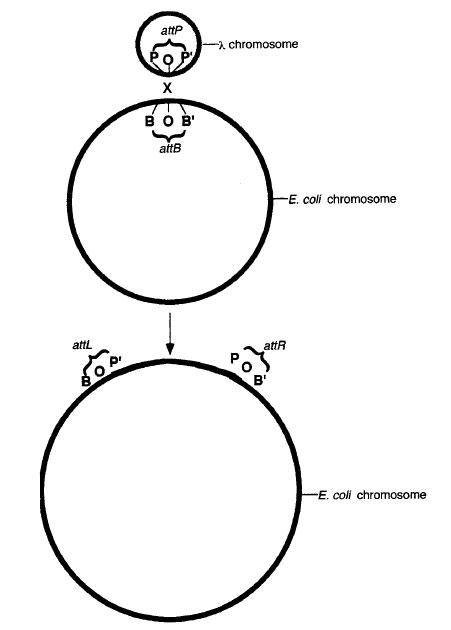Genetic Transfer
Transformation is a mechanism of genetic transfer between bacteria in which the donor DNA exists cell-free in the recipient bacterium's immediate environment. DNA can be naturally released into the environment when cells die and subsequently lyse. Experimentally, DNA containing genes of interest, usually within a plasmid, can be introduced into the environment in order to transform bacterial cells. The ability of a recipient bacterium to take up free DNA and become transformed is known as competence. Some strains of bacteria are naturally competent. In others, competence is a brief physiological state during the exponential growth phase; in these bacteria, Ca2+ ions enhance the level of competence.Transduction is a mechanism of DNA uptake by bacteria in which the donor DNA , consisting of fragments of the bacterial chromosome, is introduced into a bacterial cell via a phage vector. In generalized transduction, virtually any bacterial gene can be transferred by a lytic bacteriophage. During packaging of the viral DNA into the capsids, some of the host's DNA may be packed into the virus along with an incomplete viral genome. This virus will be able to initiate infection, and therefore introduce the original host's DNA into a new bacterial cell, but will not be able to replicate itself or lyse the new host cell.
 |
| Figure 7-2 Integration of bacteriophage λ into the E. coli chromosome. |
Specialized transduction is a process whereby a lysogenic bacteriophage serves to transfer a specific gene at a high frequency. When lysogenic bacteriophages infect host cells, their DNA is incorporated into the host's genome by site-specific recombination, which always occurs at a specified location and adjacent to certain genes. Through the process of induction, the prophage genome becomes excised from the host and undergoes a lytic cycle. Occasionally, the phage excision from the host's genome is defective and results in the release of a viral genome that contains part of the host's genome, in particular, those genes that are adjacent to the phage's site of insertion.
Conjugation is a process during which genetic information is transferred unidirectionally from a donor bacterium to a recipient through a cytoplasmic channel between the two cells. The required cell-to-cell contact between the donor and recipient can be achieved through sex pili, through agglutinins (substances that promote cell clumping), or via pheromones (chemicals that alter the behavior of other members of the same species).
There are pieces of DNA measuring 700-20,000 bp in length that "jump" from one region of the genome to another. In both prokaryotes and eukaryotes, the jumping can occur from one location on the chromosome to another or, in the case of bacteria, from the chromosome to a plasmid, or vice versa. These "jumping genes" are called transposable elements or transposons. They are of importance since they may turn genes on or off when they move from one location to the control region of another gene, and they may cause mutations if they insert themselves within a gene. During the process, transposase causes breaks in both the transposon itself and at sites adjacent to the target sequence in the bacterial genome. The transposable element inserts itself by site-specific recombination into the genome and enzymes repair the gaps




